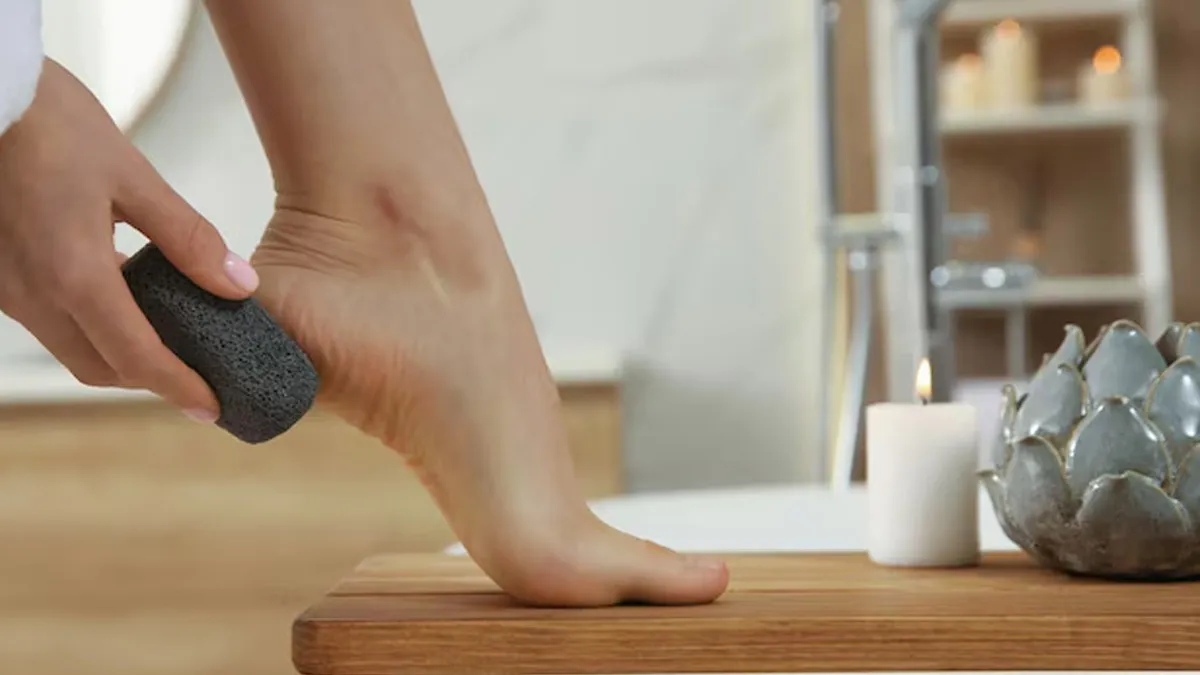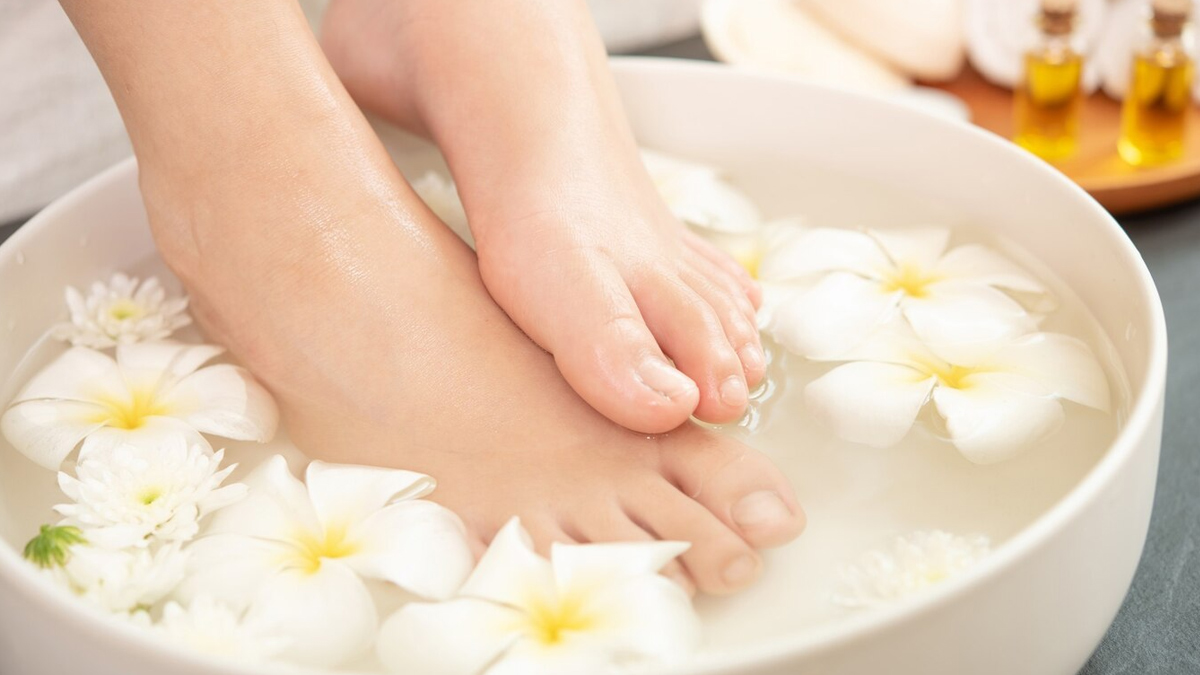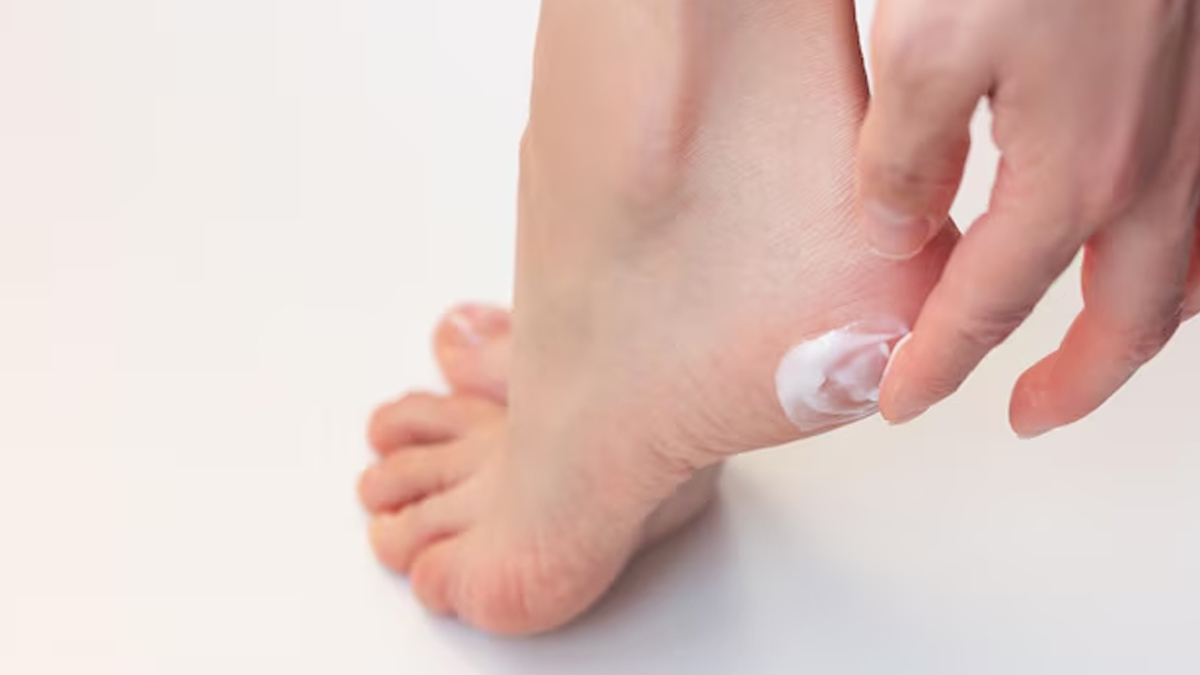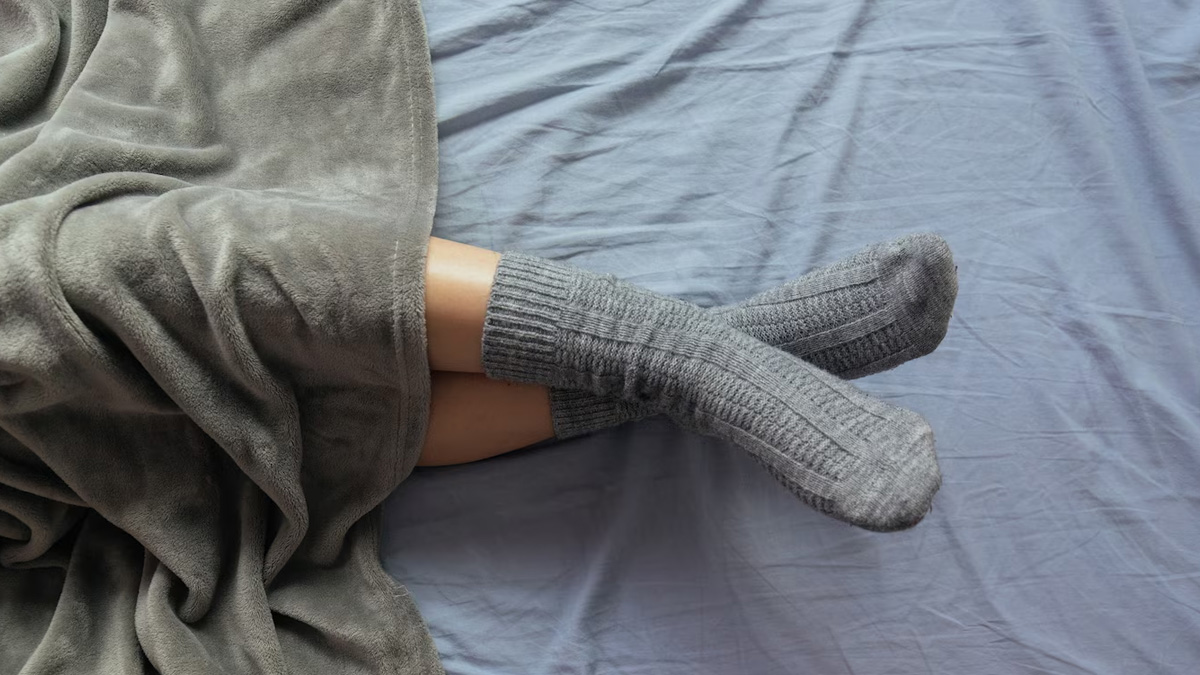
Cracked, rough, and dry skin on your heels and soles isn't just unsightly, it can invite infection and discomfort. Exfoliating correctly is the key to soft, healthy feet. Follow these expert‑recommended steps for gentle, effective care.
Table of Content:-
Why Gentle Exfoliation Matters
Feet tend to shed old skin naturally over time, but built-up thick, hardened layers may crack into painful fissures, where bacteria or fungus can enter. Excessive scrubbing, especially on dry skin, removes the protective skin barrier and can worsen cracks or lead to infection. Soaking gently beforehand softens calluses so they won't tear or become inflamed when exfoliated.
Step 1: Soak Your Feet to Soften Skin

Start with a 10–20 minute soak in warm water, adding Epsom salts, mild soap, or oatmeal for extra softness if desired. Epsom salt gently exfoliates and improves circulation, while oatmeal soaks calm irritation and moisturises the skin. Skip hot water, it removes natural oils and exacerbates dryness.
Step 2: Choose the Right Exfoliation Method
Mechanical Exfoliation
Gently use a pumice stone or foot file, only after your soak and when feet are soft. Use light circular motions and discontinue when you sense healthy skin underneath. Be careful not to over‑scrape, as this can lead to tender or at‑risk thinning areas.
Chemical Exfoliation
For thicker calluses, use chemical exfoliants containing urea, lactic acid, glycolic acid, or salicylic acid. They break up dead skin cells without harsh friction and come in podiatry-strength heel balms.
Step 3: Moisturise Immediately And Often

Once exfoliation is complete, pat your feet dry and apply a thick emollient-rich moisturiser like a heel balm containing urea, lactic acid, shea butter, petroleum jelly, or lanolin. These seal hydration into the softened skin. For deeper absorption, slip on clean cotton socks overnight.
Natural hydrators like coconut oil, shea butter, honey, and aloe vera also work well and have antimicrobial and anti-inflammatory effects.
Step 4: Stick to a Gentle Weekly Routine
- Soak + exfoliate once a week, more frequently if your skin is extremely dry.
- For chemical exfoliants, a weekly or bi‑weekly application is often sufficient.
- Avoid over‑exfoliating; damage can delay healing or lead to infections.
- Keep daily foot hygiene: wash with mild soap, dry thoroughly and between toes, and periodically change socks to avoid bacteria and fungus.
Step 5: Prevent Cracks Long-Term
- Keep hydrated and eat nutrients, such as omega‑3s, vitamin E, and zinc, to maintain healthy skin.
- Wear supportive, closed-heel footwear to distribute pressure on ankles.
- Don't walk barefoot on hard surfaces, especially when your feet are dry.
Cracked skin is a doorway for fungi and bacteria. Keeping feet smooth, hydrated, and intact supports your skin barrier and reduces risk of athlete’s foot, fungal infections, and deeper skin fissures.
Sample At‑Home Foot Exfoliation Routine

- Soak feet in warm water with Epsom salt or oatmeal for 15 minutes.
- Gently exfoliate with pumice stone or foot scrub, don’t overdo it.
- Apply chemical exfoliant (lactic acid cream or glycolic toner) if needed.
- Moisturise well with urea/lactic acid balm or natural oil.
- Wear cotton socks overnight for better absorption.
- Repeat once a week, keeping hygiene daily.
If exfoliation causes pain, bleeding, or worsens cracks, stop and talk to a healthcare provider, especially if you have conditions like diabetes or neuropathy.
[Disclaimer: This article contains information for informational purposes only. Hence, we advise you to consult your professional if you are dealing with any health issue to avoid complications.]
Also watch this video
How we keep this article up to date:
We work with experts and keep a close eye on the latest in health and wellness. Whenever there is a new research or helpful information, we update our articles with accurate and useful advice.
Current Version
